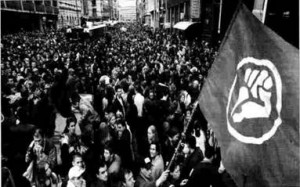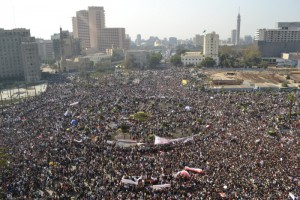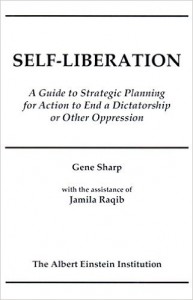Extrait de l’ouvrage: Gene SHARP (2009), Self Liberation: A Guide to Strategic Planning for Action to End a Dictatorship or Other Oppression, The Albert Einstein Institution, Cambridge, MA; 53 p.
Pour consulter l’ouvrage complet, veuillez cliquer sur Self Liberation
Which way to liberation?
Many people live in countries with governments that can be identified as dictatorships, or less harshly, authoritarian regimes. Usually, most of the people in those countries would like their oppressive regime to be replaced by a more democratic and free political system.
But, how can this be achieved?
Dictatorships are not the only major type of oppression. Systems of social and economic oppression also exist. When people want to end oppression and achieve greater freedoms and more justice, is there a way to do this realistically, effectively, self-reliantly, and by means that will last? Many people have sought answers to these questions and have worked hard to achieve liberation. Many additional people have tried to assist the oppressed people to end their subjection. However, none of us can claim to have offered adequate answers. These challenges remain.

In conflicts between a dictatorship, or other oppression, and a dominated population, it is necessary for the populace to determine whether they wish simply to condemn the oppression and protest against the system. Or, do they wish actually to end the oppression, and replace it with a system of greater freedom, democracy, and justice?
Many good people have assumed that if they denounce the oppression strongly enough, and protest long enough, the desired change will somehow happen. That assumption is an error. There are dangers in seeking a better solution. Not all offered answers are equal. Some self-styled “revolutionaries,” despite their rhetoric, distrust the oppressed population. These “revolutionaries” believe that the system of domination can only be permanently removed if their own group of “guardians” somehow gains control of the State apparatus, and then uses its systems of administration and repression to remake the society, whatever may be the wishes of the supposedly “liberated” population. These issues require new consideration.

The problem of how to remove dictatorships is generally addressed in this writer’s From Dictatorship to Democracy: A Conceptual Framework for Liberation. However, this strategic planning guide has a more limited purpose. It is intended only to assist people who wish themselves to plan a grand strategy, or super plan, to achieve their liberation from oppression and to build a more free and democratic system.
Furthermore, this document is not only relevant to people facing internal dictatorships. It is also meant to be useful to people facing any kind of oppression. This short document cannot include adequate in-depth presentations of all the knowledge and ideas needed for strategic planning of a nonviolent struggle for liberation. Therefore, interspersed in this text are references to selected published readings covering those important topics. Careful study of these selected readings in the sequence recommended is essential. They contain much of the understandings, knowledge, and insights that may be useful in the preparation of strategies of liberation.

